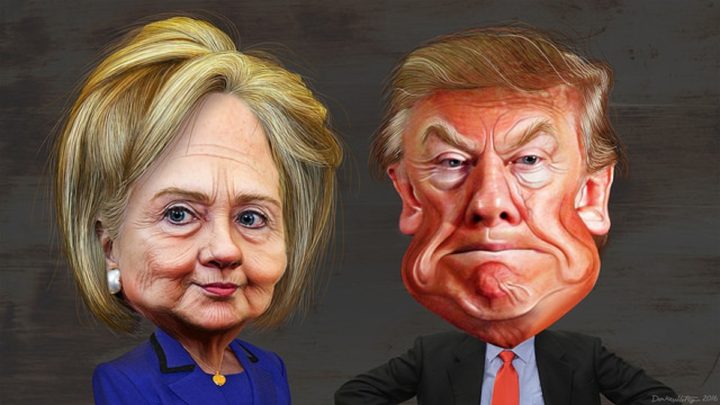By Arturo Ignacio Sanchez – Queenslatino.com
The packaging and marketing of the 2016 Democratic and Republican conventions has much to teach us about U.S. presidential politics and failures in public imagination. Both conventions were structured as political spectacles that delivered a cowboy-like morality tale between the good and the bad.
As a one-dimensional story line, between opposing forces, a line was drawn in the sand. And like all morality tales the emphasis on difference clouds the shared similarities between contestants. In effect, the campaigns were similar in two respects. They were marketed as a political spectacle and their domestic policy narratives were derived from an ideology of economic growth and technical expertise.
The conventions approached electoral politics as a commodified media spectacle. For example, the candidates were technically packaged, marketed and sold like soap. Political marketers combined 20th century television technology with 21st century social media techniques in the effort to sell their candidates, target specific populations, and spread their ideological/political message.
U.S. political media spectacles owe much to the techniques of corporate advertising. Political presentation and language are structured – like a sales pitch – to evoke an emotional response, while minimizing a balanced assessment of the peddled product. In this regard, Trump’s stark language and images of loss, fear, and ethnic/racial resentment presented a dark image that elicited a call for authoritarian redemption. While Clinton marshalled an upbeat language and a sunny visual of social solidarity and civic engagement in a quest to revitalize the economy and fortify the political creed of American pluralism.
Both camps highlighted the discontents associated with globalization, loss of well-paying jobs, and growing sense of social and economic anxiety. While they differed on the causes associated with the downward economic spiral, they agreed on generalized policy outcomes: increased economic growth and productivity.
For Trump, the economic malaise was triggered by the trilogy of an overly regulated marketplace, poorly structured “free trade” agreements, and the offshoring of U.S. firms. The Trumpian remedy was technically simple: deregulate the economy; renegotiate unfair trade agreements; and incentivize the reshoring of U.S. industrial firms.
For Clinton, the economic stagnation was rooted in a deregulated speculative economy, a corporate definition of the common good, appropriation of economic growth and productivity by the fortunate few, and the dismantling of the social safety net. The Clinton remedy was also technically simple: reregulate key economic sectors; increase the state’s distributive role in the economy; revitalize labor markets via public/private partnership; invest in infrastructure and the digital economy; tweak unfair trade agreements; and fortify the social safety net.
The Clinton and Trump approaches clearly share a reliance on the referents of economic growth, increased productivity, and technical progress. This is a long-standing exceptionalist theme in U.S. history. Contentious problems are assumed resolvable by dint of American technical ingenuity and pragmatic know-how, even in the face of a daunting ecological crisis and obvious limits on growth.
The U.S. is in crisis mode. And due to the order of magnitude, the crisis cannot be meaningfully confronted by an unimaginative reliance on “technical solutions” that dismiss fundamental structural change. In the final analysis, political marketing spectacles, ideological adherence to the dogma of economic growth, and a quasi-religious belief in technical solutions fail to meet the challenge.
Arturo Ignacio Sánchez, Ph.D. is chairperson of the Newest New Yorkers Committee of Queens Community Board 3. He has taught courses on immigration, entrepreneurship, and globalization at Barnard College, City University of New York, Columbia University, Cornell University, and New York University.










